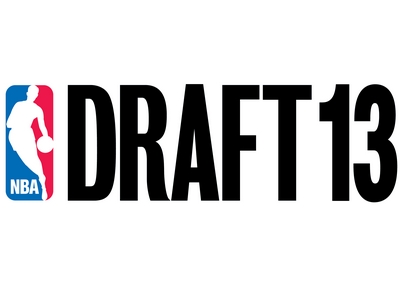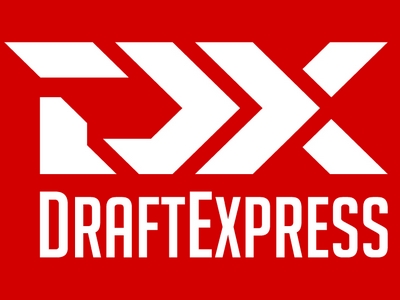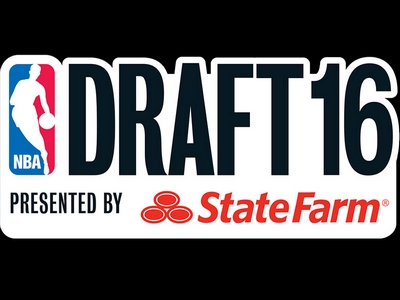-See (and sort) how all players stack up in DraftExpress' exclusive historical measurements and athletic testing database
Though the conclusions that we can draw from the vast majority of the athletic testing data is extremely limited, we'll nonetheless try to take something away from the information we've been presented with.
Trying to pinpoint a player's athleticism based on their combine testing is akin to trying to get a feel for their basketball IQ by watching them play one-on-zero it simply doesn't make all that much sense. It does help us get a very general idea of where a player is at in terms of physical conditioning and strength, which often speaks to their work ethic, but rarely sheds much light on what it really aims to portray.
Unlike the NFL combine, all parties involved realize that few people put much stock in these results. Players aren't trained in running 40-yard dashes from their days in high school like most gridiron stars and simply aren't well versed in many of these tests. Raw athletic data can be useful in a football setting where certain properties manifest themselves more completely on the field, but for the NBA's purposes, a player's lane agility time ultimately and has repeatedly proven to mean very little.
In basketball, where anticipation and coordination play major roles in how players perform on the court, combine numbers will always take a back seat to how a player uses the tools it aims to measure in actual games. Additionally, it's well accepted that there's a learning curve involved: prospects that conduct these tests multiple times will test better than those who are encountering this process for the very first time. Scouts have done their homework, they have a good feel for who the fastest players in the draft are, and know which athletes are the most explosive as it related to what they offer in game-settings. The combine only provides them with a standardized metric for particular athletic traits that often fail to live up to and remain consistent with what they already know.
Despite our reservations about the data, it still exposes some players who land at the extremes of each test, and gives us the chance to draw from some historical perspective on certain marks. At the end of the day though, the numbers these players posted at the combine are only as valuable as their ability to use them on the floor, and no matter how many times a player runs or jumps beyond his perceived means on test day, if he doesn't play to his numbers in games, he's not going to magically change his ways at the next level.
Athletic Testing Composite Rankings
Out of curiosity more than anything else, we've compiled our own Athletic Testing composite rankings. These were made by assigning players points depending on where they graded out compared with the other prospects in each of the tests done in Chicago. In a perfect world, this composite ranking would tell us who the best and worst athletes are in this draft class. Unfortunately, it's far from perfect for the reasons we described above.
| Ranking | Prospect |
|---|---|
| 1 | Shane Larkin |
| 2 | Peyton Siva |
| 3 | C.J. Leslie |
| 4 | Victor Oladipo |
| 5 | Cody Zeller |
| 6 | Michael Carter-Williams |
| 7 | Phil Pressey |
| 8 | Isaiah Canaan |
| 9 | Glen Rice |
| 10 | Tony Snell |
| 11 | Tim Hardaway |
| 12 | Ray McCallum |
| 13 | Vander Blue |
| 14 | Adonis Thomas |
| 15 | Solomon Hill |
| 16 | Carrick Felix |
| 17 | CJ McCollum |
| 18 | Kentavious Caldwell-Pope |
| 19 | Brandon Paul |
| 20 | Ben McLemore |
| 21 | Allen Crabbe |
| 22 | Archie Goodwin |
| 23 | Mason Plumlee |
| 24 | Reggie Bullock |
| 25 | Trey Burke |
| 26 | Kenny Kadji |
| 27 | Dennis Schroeder |
| 28 | Shabazz Muhammad |
| 29 | Norvel Pelle |
| 30 | Andre Roberson |
| 31 | Tony Mitchell |
| 32 | Myck Kabongo |
| 33 | Ricky Ledo |
| 34 | Trevor Mbakwe |
| 35 | James Ennis |
| 36 | James Southerland |
| 37 | Robert Covington |
| 38 | Otto Porter |
| 39 | Jackie Carmichael |
| 40 | Will Clyburn |
| 41 | Lorenzo Brown |
| 42 | Mike Muscala |
| 43 | Steven Adams |
| 44 | Grant Jerrett |
| 45 | Brandon Davies |
| 46 | Dewayne Dedmon |
| 47 | Colton Iverson |
| 48 | Kelly Olynyk |
| 49 | Deshaun Thomas |
| 50 | Jeff Withey |
| 51 | Erik Murphy |
| 52 | Rudy Gobert |
Top Prospect Athletic Testing Analysis
-Ben McLemore and Victor Oladipo performed quite well in the athletic testing overall, which came as no surprise considering the highlight reels they built over the course of the season at their respective schools. Both players posted maximum vertical leaps of 42 inches, with Oladipo edging McLemore in the no-step vertical test 33 inches to 32.5. McLemore struggled in the agility testing, posting the 7th worst time of the players in attendance, but he bounced back with a solid ¾ court sprint, finishing in a solid 3.27 seconds, two hundredths of a second behind Oladipo. Considering Michael Kidd-Gilchrist struggled in the agility drill as well at the 2012 Combine, it is worth taking McLemore's number (which ranks similarly to Spencer Hawes and Brian Cook's score) with a grain of salt.
-Cody Zeller registered the single most impressive individual mark among top prospects with his 35.5 inch standing vertical jump. His lane agility and sprint times (6th at combine) were also excellent for a 7-footer, and he ranks as one of the most mobile big men ever tested. Interestingly, Zeller max vertical was only two inches higher than his no step vertical which ranked as the lowest increase at this year's combine. Nonetheless, his 37.5 inch jump still ranked exceptionally and he was one of the clear standouts of this year's combine, placing ahead of a number of guards in our composite standings.
-Shabazz Muhammad did not particularly stand out among his peers in any one category, holding down the middle of the pick across the board. His 37 inch maximum vertical jump was likely his most impressive mark, but among similarly sized players, he was bested by no fewer than 3 inches in both leaping tests by Glen Rice Jr, who also bested him in the ¾ court sprint. This was by no means a bad showing for Muhammad, but he was overshadowed by the number of other participants competing against historical bests.
-C.J. McCollum didn't run the best times in the speed drills, but he didn't lag behind the rest of the field either, finishing right around average. His 38.5 inch maximum vertical jump was quite good and, more than anything else, he looked like the same athlete he was prior to injuring his foot and missing the latter portion of the season.
-Trey Burke did not jump particularly well, tying Shabazz Muhammad with a 29.5 inch no-step vertical and falling just shot of his maximum vertical with a mark of 36.5 inches. Where Burke did stand out was in the ¾ court sprint where his time of 3.16 was the 7th best mark turned in at the combine this season
-Michael Carter-Williams was not elite in any one test, but was well above average in all of them. His 41 inch maximum vertical leap was especially impressive. He finished just behind Peyton Siva in each test, which is quite a feat considering Siva's reputation and Carter-Williams's near 5-inch height advantage.
-Kelly Olynyk and Rudy Gobert ranked among the worst athletes in attendance. Neither player finished outside of the bottom-5 in any test except for Olynyk in the lane agility drill. Considering Gobert's size and Olynyk's skill level, this setting is obviously not well suited to their strengths.
-Otto Porter didn't stand out either, finishing at or below average in each test. Porter has never been lauded for his athleticism, but for a player who could hear his name called in the top-3, he lacks a degree of explosiveness relative to many players picked that high historically.
Individual Testing Results and Analysis
A number of potential first round picks stole the show at this year's combine, with a handful of players turning in near-record breaking performances
Maximum Vertical Jump
Five Best
Shane Larkin 44
Victor Oladipo 42
Ben McLemore 42
Peyton Siva 41.5
Michael Carter-Williams 41
Five Worst
Rudy Gobert 29
Jeff Withey 29
Erik Murphy 29.5
Kelly Olynyk 29.5
Colton Iverson 30
Shane Larkin runs away with the top spot here, finishing with the second highest max vertical leap ever recorded in our database behind Kenny Gregory's 45.5' jump in 2001. His performance places him a half an inch ahead of Nate Robinson and a full inch better than Vince Carter. Ben McLemore and Victor Oladipo stand out, ranking in the top-20 all-time and finishing tied with Iman Shumprt among current NBA players. Peyton Siva matches last year's best jump (Darius Johnson-Odom) and ranks among the top-25 all-time. Michael Carter-Williams also places well historically, matching JR Rider's 1993 and OJ Mayo's 2008 marks.
C.J. Leslie, Isaiah Canaan, Glen Rice, Adonis Thomas, and Ray McCallum round out the players with 40+ inch verticals in what was a banner year of jumping measurements.
Rudy Gobert and Jeff Withey rank as the worst leapers in attendance. Kelly Olynyk registered the worst vertical among elite prospects, but that certainly didn't hinder him from being one of the most prolific offensive players in college basketball.
Standing Vertical Jump
Five Best
Cody Zeller 35.5
Adonis Thomas 34.5
Shane Larkin 34.5
Kenny Kadji 34
Tony Mitchell 33.5
Brandon Paul 33.5
Peyton Siva 33.5
Five Worst
Erik Murphy 24.5
Kelly Olynyk 24.5
Rudy Gobert 25
Brandon Davies 26
Jeff Withey 26.5
Cody Zeller recorded one of the best marks ever recorded for a big man in the no step vertical testing. Possessing tremendous explosiveness for a 7-footer, his jump ranks among the top-15 all-time. Adonis Thomas and Shane Larkin both tested well, and impressed with their explosiveness on the whole. Kenny Kadji and Tony Mitchell also fared surprisingly well considering this particular test is normally dominated by players with size and athleticism similar to NFL wide receivers.
It isn't surprising to see four of the players with the lowest maximum vertical leaps at the bottom of these standings as well. Few of the true centers in attendance excelled relative to the impressive group of athletes assembled here, making Zeller's jump that much more impressive.
Lane Agility Drill
C.J. Leslie 10.19
Tony Snell 10.36
Vander Blue 10.4
Peyton Siva 10.59
Kentavious Caldwell-Pope 10.6
Five Worst
Deshaun Thomas 12.94
Rudy Gobert 12.85
Dewayne Dedmon 12.75
Jeff Withey 12.49
Erik Murphy 12.19
For the second straight season, the top time in the lane agility drill was turned in by a power forward. Following in the footsteps of Quincy Acy last year, C.J. Leslie used his stride length to his advantage to finish with a time that ranks among the best ever recorded regardless of position. He's joined at the top of the agility rankings by a number of guards, including Vander Blue and Peyton Siva, both of whom tested well on the whole, and Kentavious Caldwell-Pope who turned in a couple top-5 finishes in the speed related drills. Tony Snell was the fastest wing.
Rudy Gobert, Dewayne Dedmon, Jeff Withey, and Erik Murphy fall into the bottom-5, which follows with the logic that bigger players should be a slower of foot and take marginally longer to change directions. Deshaun Thomas was the slowest player in attendance, which comes isn't surprising considering his noted lack of great athleticism.
3/4 Court Sprint
Five Best
Shane Larkin 3.08
C.J. Leslie 3.1
Kentavious Caldwell-Pope 3.12
Phil Pressey 3.13
Vander Blue 3.14
Five Worst
Kelly Olynyk 3.59
Rudy Gobert 3.57
Erik Murphy 3.57
Deshaun Thomas 3.53
Colton Iverson 3.52
Tony Mitchell 3.52
Unlike last year when no player placed particularly well in the ¾ court sprint historically, Shane Larkin ran one of the top-40 times in the history of our database, finishing right on par with the likes of Russell Westbrook, Dwyane Wade, and Mike Conley. Considering how well he tested, Larkin certainly made his mark after measuring in at 5'10.25 with a 5'10.75 wingspan and an extremely poor 7'5 ½ standing reach on Thursday. C.J. Leslie also ran well in Chicago, posting a time that would rank him among the ten fastest power forwards in our database. Kentavious Caldwell-Pope, Phil Pressey, and Vander Blue all would have been the fastest player at last year's combine.
Kelly Olynyk, Rudy Gobert, Erik Murphy, and Colton Iverson were among the slowest players in attendance. These tests are typically not kind to big men. It's a bit surprising to see Tony Mitchell in the bottom-5 and he may be a prime example of an explosive athlete who lacks the background to be an explosive tester.
Read Next...
-
Jun 24, 2016, 04:30 pmThanks for following the 2016 NBA draft with us. It was a wild and unpredictable night. The process of evaluating the 2017 NBA draft has already started.
-
Full Results of the 2016 NBA Draft - Picks and Trades
Jun 24, 2016, 10:45 amA full breakdown of every pick in the 2016 NBA Draft, from 1-60, including all trades that occurred.
Recent articles
16.6
Points
3.0
Rebounds
7.6
Assists
20.2
PER
6.3
Points
1.7
Rebounds
4.0
Assists
14.9
PER
7.0
Points
4.5
Rebounds
0.7
Assists
9.1
PER
0.0
Points
0.0
Rebounds
0.0
Assists
0.0
PER
1.8
Points
2.7
Rebounds
0.9
Assists
12.9
PER
12.8
Points
4.8
Rebounds
5.9
Assists
12.7
PER
5.0
Points
2.0
Rebounds
5.5
Assists
12.9
PER
10.3
Points
1.8
Rebounds
1.5
Assists
16.4
PER
15.9
Points
6.7
Rebounds
3.9
Assists
21.4
PER
5.5
Points
2.9
Rebounds
0.4
Assists
10.2
PER
4.9
Points
1.5
Rebounds
2.4
Assists
14.7
PER
8.4
Points
2.2
Rebounds
4.3
Assists
13.9
PER
12.6
Points
3.8
Rebounds
2.3
Assists
13.3
PER
5.7
Points
2.3
Rebounds
0.7
Assists
9.4
PER
0.6
Points
1.8
Rebounds
0.9
Assists
3.6
PER
8.0
Points
1.8
Rebounds
0.5
Assists
22.0
PER
10.0
Points
2.4
Rebounds
2.4
Assists
10.4
PER
8.6
Points
2.9
Rebounds
1.5
Assists
12.2
PER
17.3
Points
2.0
Rebounds
2.0
Assists
16.9
PER
9.0
Points
5.1
Rebounds
2.6
Assists
11.6
PER
7.0
Points
4.0
Rebounds
1.0
Assists
9.7
PER
5.2
Points
5.0
Rebounds
1.2
Assists
15.9
PER
2.2
Points
1.7
Rebounds
0.3
Assists
7.7
PER
21.7
Points
2.3
Rebounds
2.3
Assists
18.8
PER
4.0
Points
0.0
Rebounds
1.0
Assists
10.4
PER
13.7
Points
2.7
Rebounds
6.1
Assists
13.9
PER
5.8
Points
1.4
Rebounds
0.1
Assists
20.3
PER
12.7
Points
8.5
Rebounds
0.7
Assists
26.5
PER
5.4
Points
5.5
Rebounds
1.3
Assists
15.2
PER
3.0
Points
6.5
Rebounds
2.0
Assists
23.1
PER
1.6
Points
1.0
Rebounds
2.0
Assists
0.8
PER
18.6
Points
9.4
Rebounds
6.4
Assists
18.3
PER
5.5
Points
5.5
Rebounds
1.5
Assists
13.0
PER
17.8
Points
8.0
Rebounds
3.2
Assists
24.2
PER
0.0
Points
1.0
Rebounds
0.0
Assists
-3.7
PER
3.0
Points
2.7
Rebounds
2.3
Assists
10.6
PER
0.0
Points
0.0
Rebounds
0.0
Assists
0.0
PER
4.0
Points
2.3
Rebounds
0.7
Assists
9.0
PER
10.2
Points
5.0
Rebounds
3.9
Assists
14.9
PER
11.4
Points
3.0
Rebounds
4.9
Assists
17.6
PER
1.1
Points
1.3
Rebounds
0.3
Assists
4.3
PER
0.0
Points
0.0
Rebounds
0.0
Assists
0.0
PER
10.7
Points
6.8
Rebounds
1.8
Assists
22.5
PER
14.7
Points
4.8
Rebounds
2.5
Assists
25.7
PER
6.4
Points
5.7
Rebounds
1.5
Assists
18.3
PER
8.8
Points
7.8
Rebounds
2.0
Assists
21.3
PER
8.1
Points
5.1
Rebounds
4.4
Assists
17.4
PER
6.3
Points
2.8
Rebounds
1.0
Assists
11.7
PER
5.9
Points
4.1
Rebounds
0.4
Assists
24.4
PER
3.5
Points
3.8
Rebounds
0.3
Assists
9.8
PER
14.0
Points
12.8
Rebounds
1.4
Assists
19.4
PER
0.0
Points
0.0
Rebounds
0.0
Assists
0.0
PER
14.2
Points
7.2
Rebounds
4.0
Assists
23.2
PER
7.5
Points
2.8
Rebounds
0.3
Assists
20.7
PER
19.6
Points
4.3
Rebounds
4.7
Assists
16.9
PER
10.0
Points
2.7
Rebounds
0.3
Assists
12.3
PER
7.3
Points
0.7
Rebounds
1.0
Assists
15.1
PER
5.0
Points
2.1
Rebounds
0.8
Assists
7.5
PER
15.1
Points
2.5
Rebounds
7.0
Assists
21.5
PER
4.4
Points
1.4
Rebounds
0.5
Assists
13.5
PER
10.8
Points
5.0
Rebounds
4.4
Assists
15.6
PER
8.8
Points
3.6
Rebounds
2.6
Assists
9.2
PER
Twitter @DraftExpress Follow @draftexpress
















































































Comments